The Great and Powerful Zimbabwe
Country: Zimbabwe by Marlowe
08-07-2013
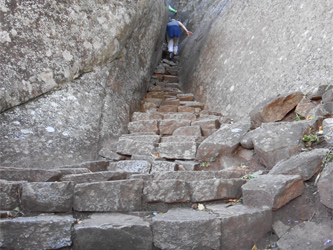
Lisette climbs the steps of great Zimbabwe. Even with the flu, she handled the not-so-easy terrain valiantly.
This post comes a little late but with happy reflections of a fantastic voyage.
After leaving Maputo, Lis and I made our way to Kruger National Park and the Bushfire Arts and Music Festival in Swaziland. Sandwiched in-between those two was our excellent visit to the Great Zimbabwe in southeast Zimbabwe. We spent the first night recuperating from the long bus ride there and were fresh the next day to explore the ruins with our guide “Always”. Here are few things we learned on the tour and in our own research.
What is Great Zimbabwe?
The Great Zimbabwe is a UNESCO World Heritage archaeological site located 27 kilometers southeast of Masvingo in the country of Zimbabwe. The site is unique in the region for its mortar-free stone walls and structures, iron-age technology artifacts, and size; occupying 722 hectares. From the 11th to 14th centuries it was the capital of the greatest sub-Saharan African civilization of ancient times. The civilization was created by the ancestors of the current-day Shona, the ethnic group and language that exists in the region.
What is the difference between Zimbabwe and Great Zimbabwe?
“Zimbabwe” was first and foremost a word in Shona. The word can be broken down this way:
Zi = a very large object | mba = houses | bwe = stone
So modern Zimbabweans used “great houses of stone” as an apt description of the site and civilization in their own language. Of course this is a modern construction and ancient Zimbabweans would have called it something else.
Though Great Zimbabwe had declined and Europeans taken over, the country of Zimbabwe had yet to exist. For the latter part of the 19th and better part of the 20th centuries, it was known as Southern Rhodesia , with Zambia being it’s namesake with the “northern” prefix. These areas were effectively (for the scope of this article) colonial nations named after and under the thumb of British mining magnate Cecil Rhodes .
By the 1960s rebel groups of Shona liberationists had started using the term “Zimbabwe” (after the site) to refer to Southern Rhodesia. Then in 1980 when their efforts to secure the nation’s independence were successful, the name stuck.
Why did they choose this name?
A ruin is a thing that has fallen apart, so why name your nation after one? Context provides clues. During the colonial years it was not known who had built the ruins and scholarly speculation ran wild . As “experts” argued back and forth, they did manage to agree on one point: it most certainly was not built by black Africans. The poem, A White Man’s Burden describes well how some thought at the time. If Zimbabweans had built the ruins they were already civilized; making enslaving them hard to defend. For whatever reason, the notion was suppressed for a long time.
The 20th century saw proper archaeological excavations at the site and the consensus now amongst experts is that Great Zimbabwe was founded by the Shona. The site now represented a powerful heritage that flew in the face of racist ideologies alive in the 1960s. In this case, “Great Stone Houses” really represents a proud legacy.
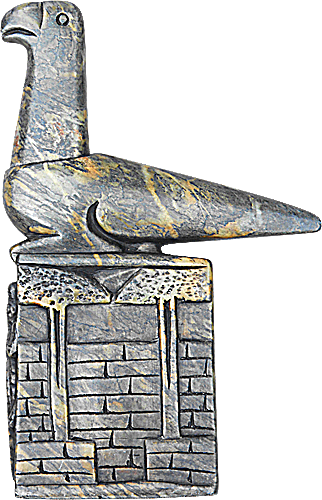 Why is the national symbol that bird I see in the flag?
Why is the national symbol that bird I see in the flag?
That is the Zimbabwe bird. Soapstone versions of the bird were found over the years at the site, many of which are housed at the site’s museum. Because so many of the birds were found there, the bird and nation have become synonymous for some.
Why did the Ancient Zimbabweans have so many of these stone birds?
The birds are thought to be symbols of the royal family of Great Zimbabwe. As such, they are found at the capital near Masvingo. The ones found at the site range in style and sit atop slender stone pedestals between 16 inches and a metre in height.
The bird on the right is not like the royal birds found at the site and located in their museum. I bought it as a souvenir from some local artisans.
About the site
Although Lisette was sick with the flu, I think I speak for her when I say that we both thoroughly enjoyed our time at the site. We spent three hours with Always, who explained the site in detail.
Overview
The site was occupied by somewhere between 11 000 and 20 000 people. The royal family, their attendants, servants, soldiers and clergy would have only been small number of these. A good portion of the area outside the capital was occupied by commoners. Because most could not afford stone houses, little is left of their neighbourhoods.
The economy of the nation was based on crops and animal husbandry. Foreign beads and other exotic artifacts indicate that inter-continental trade occurred with places as far away as China. The site proper is divided into the Hill Complex, the Great Enclosure and the Valley Enclosures.
The Hill Complex
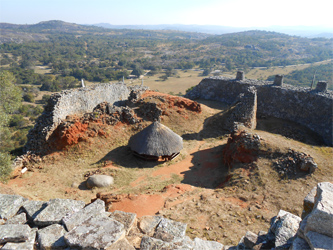
This shot is not from the highest point on the hill complex and the sky overcast. Even so, the view is impressive.
The Hill Complex is the highest point of the site, rising 100m over the rest of the site. It provides an amazing view of not only the Great Enclosure and Valley Enclosures but of the surrounding countryside as well. It’s highest point was used as a lookout; effective for strategic purposes. Scholars think the Hill Complex may have been the residence of the king. The path and tunnel that leads up to the first courtyard opens up through an arch only five feet high. Always speculated that this forced visitors to “bow” upon entering. Royal remains such as gold beads and ceremonial spears were found here.
The image to the right is located in another courtyard where it is believed the royals would address their subjects and hold council. Always noted how similar the rocks pictured to the right resembled the Zimbabwe bird (easiest to see with the “beak” in the top left). The King and his royal family would have been seated on the topmost tier ( collapsed at the base of the “neck”).
On the eastern side of the hill is a deep and low recess with a view of the valley. It is thought that this was the spiritual centre of the kingdom, where the King and his clergy would perform rain-making ceremonies. Six of the famous soapstone birds were found in this recess.
Near the south exit of the complex was a the closed off entrance to a tunnel. Over the years, at least two westerners had disappeared while trying to explore it. According to Always, the tunnel had several purposes and ended in a town 250 miles away! I really wanted to learn more but to no avail.
The Great Enclosure
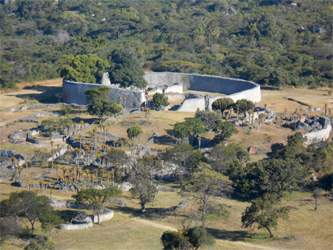
The smallest trees here are twice the height of a person. This gives you an idea of the size of this place.
This is the single largest ancient structure in sub-Saharan Africa. The outer wall shown here is 11 metres tall and as thick as 5 metres. An estimated million granite blocks were used in its construction.
Inside the enclosure one finds a narrow passage between two high walls. This may have served as a defensive feature to funnel would-be attackers into tight spaces where numbers count for nothing. At the end of that passageway is the conical tower and a large mound of stone. Always told us that there were once another mound on the opposite side of the tower. This phallic arrangement leads some to believe that this site was where fertility training took place. The King had many wives and they learned how to please him here.
The Valley Enclosures
Situated between the Hill Complex and the Great Enclosure is this valley full of smaller enclosures. A great wealth of artifacts have been found here including the seventh soapstone bird that became the symbol of modern Zimbabwe. Evidence suggests that the this is where the junior wives of the King lived, with easy access to both the Hill and the Great Enclosure.
Recreated Shona Village
Lis and I had absorbed a great deal about the past. Always led us to a small fenced plateau in the landscape that is scholar’s best-guess recreation of how commoners lived in the time of the kingdom. It’s easy to see why little had remained of the commoner’s habitation. The wood and mud houses seemed to be crumbling and we were told they needed to be rebuilt every year.
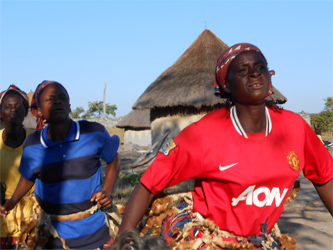 We watched the musical performance and dancing by some local people who worked at the site. There was also some stoneware figurines near the entrance. It all felt a bit touristy but we learned a lot about the instruments they were using and tipped them for the entertainment.
We watched the musical performance and dancing by some local people who worked at the site. There was also some stoneware figurines near the entrance. It all felt a bit touristy but we learned a lot about the instruments they were using and tipped them for the entertainment.
By the end of the day Lis’ flu was acting up. We gave Always a fat tip for being a great guide and headed back to our accommodation. The next day we visited the site museum and bought some stone souvenirs for ourselves and loved ones from some locals just outside the park.
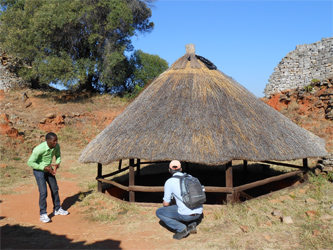
Our guide Always shows some excavated pottery in the Hill Complex. Apparently this is enthralling to me.
Great Zimbabwe stands as my second favorite tourist experience in Africa, with Victoria Falls being first and Vilankulo a close third. Because our guide Always is local, we learned about the site from a Zimbabwean perspective with far more detail than any textbook could provide.
If you’re into archaeology or history, go there. You won’t be disappointed.




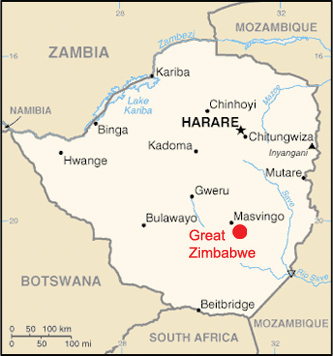
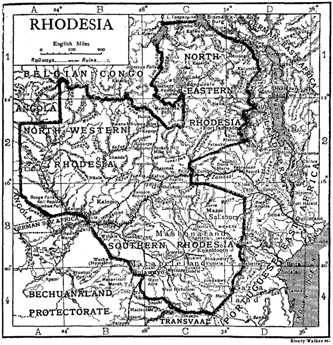
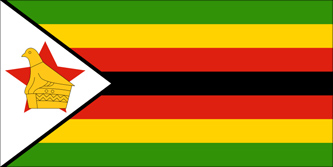
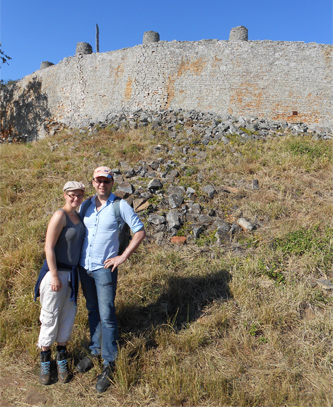
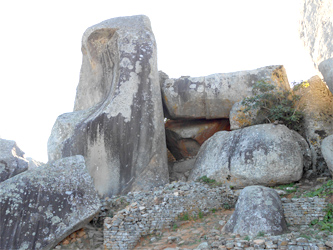
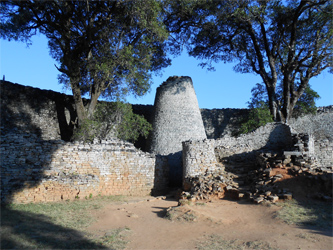
Despite the flu, loved every minute here!